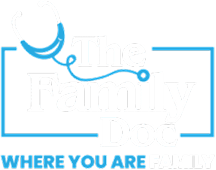
Introduction
When you visit a hospital, the first point of contact with the healthcare is the primary care. The purpose is to provide easy access to medical care to help improve the general public’s health.
However, if you are still wondering what primary care is, here’s your lead for a comprehensive guide to this type of care.
What Is Primary Care?
Primary care is your first point of contact for health concerns and preventive care. It refers to the routine, day-to-day healthcare provided by a medical professional, often a family doctor or general practitioner. These doctors help manage your overall health by offering a wide range of services from preventive screenings to chronic disease management.
So, what is primary care exactly? Think of it as a long-term partnership with a trusted provider who understands your medical history and helps guide your health decisions. Whether it’s a yearly check-up or managing a condition like diabetes, this type of care is the starting point for most healthcare needs.
Aim of Primary Care
The core objective of this type of care is to enhance public health by ensuring convenient access to healthcare services. It emphasizes treating the individual as a whole, rather than concentrating solely on a specific illness, body system, or organ. The goal is to promote overall health and well-being by preventing or addressing current and potential health concerns.
The World Health Organization (WHO) outlines several essential responsibilities that care providers undertake to achieve this objective. These responsibilities include:
- Expanding access to healthcare services
- Reducing social inequalities in health care
- Structuring healthcare systems to address the population’s needs
- Integrating health and healthcare into all areas of public policy
- Educating and empowering leaders in effective healthcare delivery
- Promoting active involvement from all stakeholders in health, including patients, doctors, public health officials, and allied health professionals
Why is Primary Care Important?
Primary care is your first option when it comes to healthcare. You can think of it as the main source for healthcare in the larger context of your community.
This type of care aims to:
- Enhance your access to medical services
- Reduce your healthcare expenses
- Boost your overall health outcomes
For many individuals, the care proves to be a more efficient option compared to visiting the emergency room. It offers a more affordable and less time-intensive way to address minor, acute conditions or injuries.
As stated by the Council on Graduate Medical Education, individuals with convenient access to a care provider generally experience lower healthcare costs and enjoy better health overall.
What Does Primary Care Include?
Knowing about this type of care, it is necessary to gain insights about what primary care includes to help you make informed choices. Here’s a breakdown of common services:
- Preventive care: Vaccinations, screenings, and lifestyle counseling.
- Chronic disease management: Conditions like diabetes, high blood pressure, and asthma.
- Acute illness treatment: From upper respiratory infection treatments to the approach to constipation and diarrhea treatment.
- Skin care: Providers can offer treatment for acne and skin rashes, reducing the need for a dermatologist.
- Heart health: Access to expert primary care for heart disease prevention and monitoring.
- Mental health: Support for anxiety, depression, and stress-related conditions.
Whether you need a routine care doctor for a physical or long-term monitoring of health issues, this type of care covers it all.
What Types of Services Does Primary Care Involve?
Although a first step, a provider can offer a range of services, therapies, and procedures. Some common ones are:
- Ultrasounds
- Medication prescriptions
- Diabetes screenings
- Birth control services
- Wound care
- Cardiovascular health screenings
- Minor surgical procedures like suturing wounds
- Health counseling
- Casting, splinting, and bracing
- Immunizations
- Cancer screenings
Benefits of Primary Care
There are many benefits of primary care that extend far beyond treating illnesses. Let’s explore some of the most impactful ones:
- Early Detection: Regular visits make it easier to catch problems before they escalate
- Continuity of Care: A consistent relationship with your doctor leads to better communication and outcomes.
- Holistic Health Monitoring: This type of care looks at the big picture—physical, mental, and emotional well-being.
- Cost-Effective: Preventive care and disease management help reduce expensive emergency room visits.
- Improved Patient Satisfaction: Patients who engage with this type of care report higher satisfaction and better health outcomes.
Ultimately, having a trusted care provider means having someone who sees you as a whole person, not just a set of symptoms.
What to Expect During a Primary Care Visit?
If this is your first time visiting a primary care provider, you might wonder what to expect.
First, the healthcare provider will conduct a detailed health history. This will be followed by vitals like blood pressure and weight. Then your symptoms will be addressed, the physician will order necessary tests, and guide you for further treatment.
Whether you’re visiting for treatment for acne and skin rashes or an annual check-up, primary care visits are designed to be comprehensive and patient-focused. For chronic conditions, follow-up appointments will ensure your health is on track.
Additionally, you can now book your in-clinic doctor appointment online, making access to primary care more convenient than ever before.
When to See a Primary Care Provider?
These visits are not just for health issues; you can visit one for regular check-ups too, even when you are healthy. However, you should definitely see your provider if you experience:
- Persistent cough, fever, or sore throat
- Changes in weight, appetite, or energy
- Signs of chronic conditions like high blood pressure or diabetes
- Mental health symptoms like depression or anxiety
- Digestive issues requiring an approach to constipation and diarrhea treatment
- Concerns about skin conditions, heart health, or reproductive health
These symptoms are common reasons people seek primary care, and early evaluation can prevent complications.
How to Choose the Right Primary Care Provider?
Once you opt for this type of care, the next question is how to choose the right provider. Here are a few tips:
- Check credentials and specialties: Make sure the provider has experience with your specific needs.
- Read reviews: Patient testimonials can provide insight into the provider’s communication style and care approach.
- Location and convenience: Choose a clinic that fits your schedule and offers flexible appointments.
- Comfort level: You should feel comfortable discussing personal concerns with your provider.
Whether you’re looking for a family doctor, pediatrician, or internist, the goal is to find someone you can build a long-term relationship with.
Final Thoughts
To finalize, primary care is the building block of the healthcare system. If you’ve ever asked, What is primary care, now you know it’s much more than treating illness; it’s about establishing a long-term partnership for your lifelong healthcare journey.
Ready to take the next step? The Family Doc is your trusted partner in providing lifelong healthcare services. You visit us once, and we hold your hands throughout your healthcare journey. From primary to urgent care, we are a hub comprising expert physicians and healthcare providers. Moreover, our Family Practice Clinic offers rehabilitation services for addiction, too.
Book your in-clinic doctor appointment online today and start your journey toward better health.


